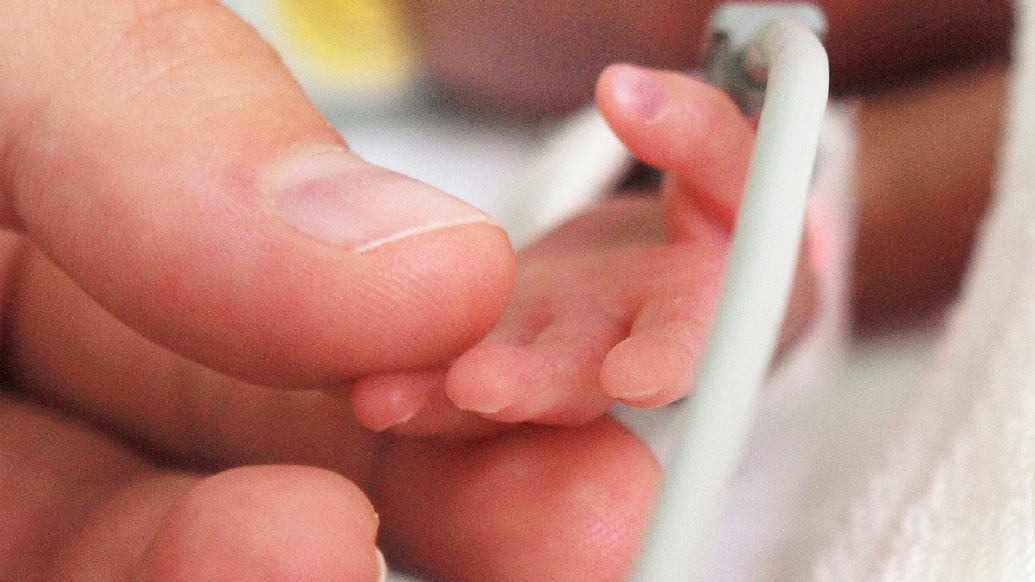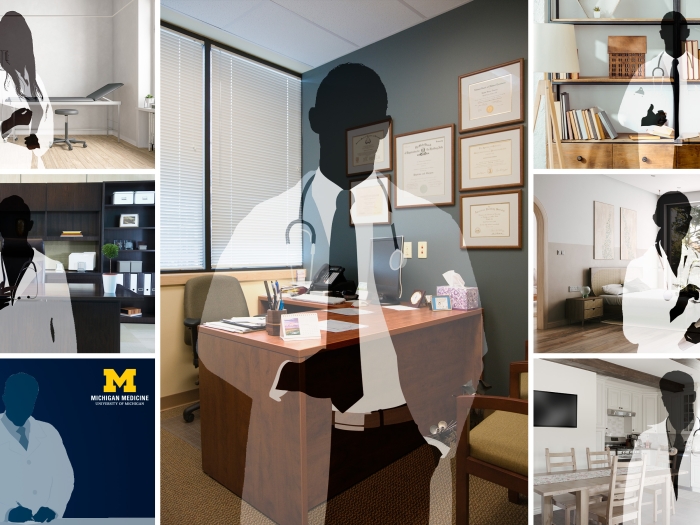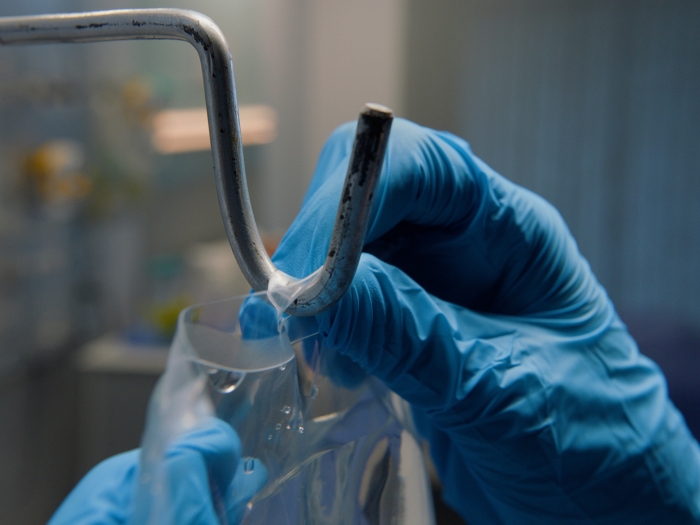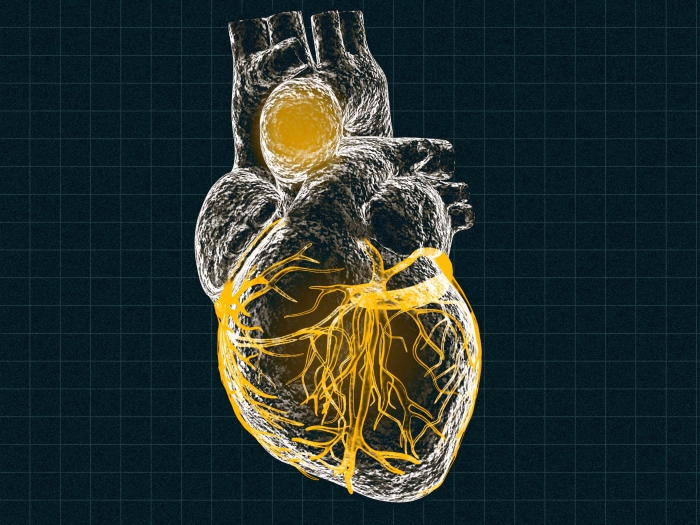Using data from multiple studies, the model successfully predicted preterm birth with 86% accuracy
3:32 PM
Authors |

Our bodies are teeming with bacteria, comprising microbiomes that have a somewhat mysterious connection to our overall health.
Over the past few decades, scientists have tried to explain how varying populations of bacterial species either result in or reflect good health or disease, but these studies have suffered from a crisis of reproducibility.
Jonathan Golob, M.D., Ph.D., of the Department of Internal Medicine's Division of Infectious Diseases at the University of Michigan, has been working on solving this problem by assembling huge sets of data from multiple diverse microbiome studies all focused on the same question: can the composition of the vaginal microbiome lead to preterm birth?
Thanks to Golob’s work, scientists can now definitively say ‘yes.’
The dominant strategy for microbiome studies, explained Golob, is to amplify the bacterial DNA within a sample by looking for a gene, called 16S, that is present in all bacteria.
“This gene has both regions that have not changed significantly for billions of years,” said Golob, “and in between those are areas that don’t have to be any particular way, so they drift. Those areas work like a barcode and are how we can go back and figure out which microbes were in a sample.”
However, the way the amplification is performed varies from study to study.
What’s more, the population of people from whom the samples are collected are different.
Golob and his team developed a new approach for combining microbiome data together while overcoming the noise introduced by the different techniques used in each study into a tool they dubbed MaLiAmPi (Maximum Likelihood Amplicon Pipeline).
The technique was recently described in the journal Cell Reports Methods.
This work was supported by March of Dimes, the leading non-profit working to improve maternal and infant health outcomes, and a University of Michigan Pandemic Research Recovery grant.
“The classic way that organisms are lumped together is to give them a name, like E. coli. The problem is that a lot of those names are imprecise, sort of the way the name ‘elephant’ doesn’t tell you if its male or female or an Asian or African elephant,” said Golob.
“This approach doesn’t use names but uses information we have from DNA sequences. These phylotype groups are basically as good as we can do with the information available.”
In addition to the Cell Reports Methods paper outlining MaLiAmPi, Golob’s tool – and its underlying approach – is prominently featured in a new paper in the journal Cell Reports Medicine. The focus of that paper is a global crowdsourcing project focused on prediction of preterm birth risk supported by March of Dimes.
In that project, MaLiAmPi was used to generate a large dataset of samples of the vaginal microbiome during pregnancy so they could be used for preterm birth prediction (and hopefully, prevention).
“What drives March of Dimes research is not copyright, patent, or financial gain,” said March of Dimes Chief Scientific Officer Emre Seli, M.D.
“It’s the ability to innovate, discover, and bring life-changing therapies to moms and babies in a smart and efficient manner.”
Golob collaborated with Marina Sirota, Ph.D. and Tomiko Oskotsky, M.D. of the University of California, San Francisco as well as an international, interdisciplinary team of more than 50 scientists to use the harmonized microbiome data from MaLiAmPi and bring the computational community to develop models to predict preterm birth, which impacts 1 in 10 babies and is one of the leading causes of infant death in the U.S.
Using vaginal microbiome data from across the March of Dimes PRC (Prematurity Research Center) network and other publicly available data, the models predict the risk for two types of preterm birth - one before 37 weeks and the other before 32 weeks.
The models’ predictive power was strong: the best performing models predicted preterm birth with a 69% accuracy and the other predicted early preterm birth with an 86% accuracy on data not available to the model developers that MaLiAmPi was able to harmonize in after the fact.
“Before these two models, we had no way to predict preterm birth based on a woman’s vaginal microbes and we lacked decisive scientific evidence that vaginal microbiome was indeed a predictor of preterm birth risk,” said Sirota, associate professor in the Bakar Computational Health Sciences Institute and the department of Pediatrics at UCSF, principal investigator at the UCSF PRC and founder of the March of Dimes Database for Preterm Birth Research that she co-directs with UCSF senior research scientist Dr. Oskotsky.
“Now, we know unequivocally that the microbes inside a woman’s vagina play a critical role in her risk for preterm birth, and we have a reliable way to test for that risk and intervene early to prevent the worst outcomes.”
The preterm birth prediction models provided a real-life test drive of Golob’s MaLiAmPi approach, including the incorporation of new data separate from the data the model was trained on.
The MaLiAmPi harmonized dataset of the vaginal microbiome in pregnancy is available for researchers at the Database for Preterm Birth Research and has already enabled other studies.
“This is really just the beginning,” Oskotsky said.
“We plan to make the models more robust, more versatile and more reliable so we can make a big impact quickly.”
Golob agreed.
“One of the reasons I am optimistic about using the microbiome as a predictive tool (once the technical challenges for making predictive models are overcome), is because the microbiome can relate to conditions such as preterm birth not just by causing it but also by responding to changes in the host--the person,” said Golob.
“It reflects our health, our genetic heritage, our environmental exposures and therefore is a very potent source of information about how things are going. The models that are making such strong predictions are likely doing so based on all of the above.”
As a next step, he hopes to see the tool move out of the research space and into clinical application following prospective clinical trials involving pregnant people and their clinicians, and to test it with other conditions such as inflammatory bowel disease.
Said Golob, “It's groundbreaking to come up with all of the things that will be necessary to have a microbiome-based test, but we’ll do it.”
Papers cited: “MaLiAmPi enables generalizable and taxonomy-independent microbiome features from technically diverse 16S-based microbiome studies,” Cell Reports Methods. DOI: 10.1016/j.crmeth.2023.100639
“Microbiome Preterm Birth DREAM Challenge: Crowdsourcing Machine Learning Approaches to Advance Preterm Birth Research,” Cell Reports Medicine. DOI: 10.1016/xcrm.2023.101350
Sign up for Health Lab newsletters today. Get medical tips from top experts and learn about new scientific discoveries every week by subscribing to Health Lab’s two newsletters, Health & Wellness and Research & Innovation.
Sign up for the Health Lab Podcast: Add us on Spotify, Apple Podcasts or wherever you get you listen to your favorite shows.

Explore a variety of healthcare news & stories by visiting the Health Lab home page for more articles.

Department of Communication at Michigan Medicine
Want top health & research news weekly? Sign up for Health Lab’s newsletters today!





